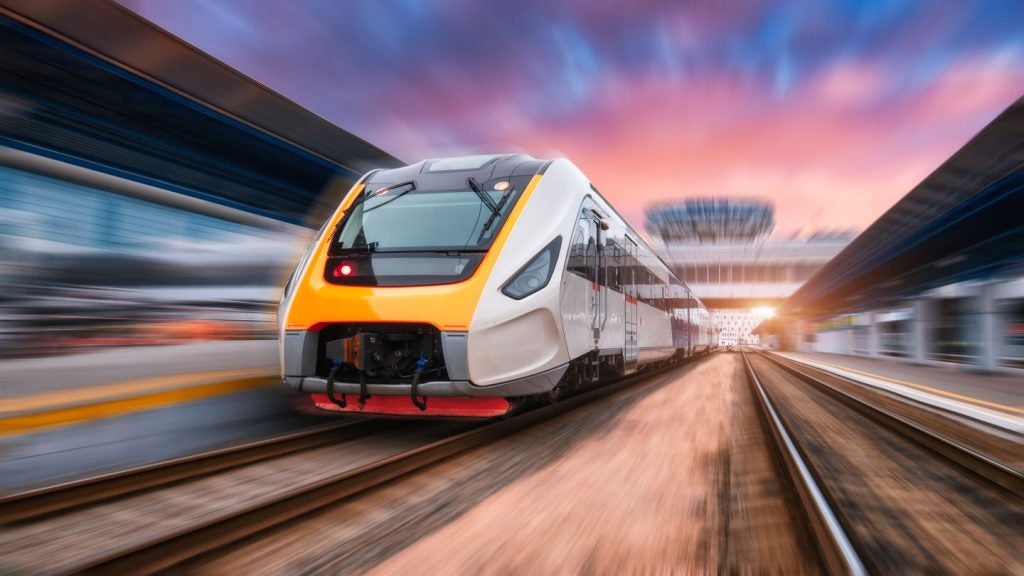
Fujitsu.jpg” />
The Spring 2016 National Rail Passenger Survey, produced by Transport Focus, shows that nationally 80% of passengers are satisfied with their journeys, but when asked about punctuality and reliability that figure drops to 73%.
The industry acknowledges that it can do better, but how? Aside from the necessary investment in infrastructure and new rolling stock, there’s a desire to digitise the railways. For too long the sector has lagged behind early adopters such as financial services, and is known for following rather than leading. However, this could be about to change.
Russell Goodenough, client managing director for transport at Fujitsu UK & Ireland, sees a future where rail travel is profoundly different from what we have now and focused around what is known as intelligent mobility. Here, he discusses the challenges and opportunities of a digital-first approach.
Gary Peters: Russell, what work does Fujitsu undertake in the UK rail sector?
Russell Goodenough: We have contracts with all of the train operating companies (TOCs), and we support them all to a greater or lesser extent.
How well do you really know your competitors?
Access the most comprehensive Company Profiles on the market, powered by GlobalData. Save hours of research. Gain competitive edge.

Thank you!
Your download email will arrive shortly
Not ready to buy yet? Download a free sample
We are confident about the unique quality of our Company Profiles. However, we want you to make the most beneficial decision for your business, so we offer a free sample that you can download by submitting the below form
By GlobalDataSee Also:
Some of them use our software products at a relatively low level, while others we support more extensively by operating one or more of their retail channels.
We are expanding our reach through mobile phones and tablets, so TOCs can better serve passengers on trains and on platforms.
In addition, we have two very substantial contracts with Crossrail and HS2, so it's not just about supporting day-to-day operations, but also providing the IT that's building the technology for the next generation of projects.
We are helping to design the technology for the railway of the future.
GP: Intelligent mobility is quite a broad term. Can you explain what it means for transport – and in particular rail transport – in the UK?
RG: It's how I envisage the future of transport and how it’s delivered.
In my mind, it's about how technology contributes to any one or more of three areas: first, improving access to the rail network, so that might be new journey planning apps.
Then, the second part is digital technology that finds new ways to bring supply and demand together. We have lots of data in the industry, but we're not using it very effectively to manage congestion. I think the transport sector has been quite slow to adopt new digital products.
GP: Why?
RG: That’s probably because there's a heavy dependence on capital infrastructure. There's an opportunity to learn from the companies that are right at the front end of finding new ways to deliver services.
We think that the transport industry is quite vulnerable to disruption at the moment. There’s lots and lots of new technology coming through, and it’s about making the network much more demand responsive.
So, what if there was a better way of presenting the available options to you, that was deeply tailored to you? We could then use that data to shape the services; perhaps have on a different length train or change the configuration of the carriages in real time.
The third part is making sure the journey is seamless, which in this sense means maintaining connectivity throughout a journey. The network is part of people's daily lives, [so it’s important to be] ‘on’ and always connected.
That helps with understanding real-time delays and how that might shape a journey.
GP: So, how will intelligent mobility change the industry?
RG: At the moment, passengers have to ‘join up’ their journey. They have to understand what component of the journey the rail network will deliver.
I see the future being less about the consumer joining up their own journey. I can't see anybody better than the train companies in stepping up into a concierge-type role – one that holds your hand throughout the door-to-door journey.
Imagine going to a concierge in a hotel and asking for restaurant recommendations. If they come back with 132 options, that would be bewildering. You'd expect them to ask leading questions and then zone in on the best option. I think the train companies need to step into that kind of role and offer you the end-to-end journey.
GP: How could it help those with disabilities access the network?
RG: When I think about intelligent mobility, I have a specific journey in mind. If I was required to visit my headquarters in Tokyo, that would imply some sort of journey to a train station, then to an airport, and then the same in reverse, and so on.
I see a future where I just say to my smartphone: ‘I need to get to Tokyo’, not ‘I need a train for this time to get to Gatwick’, for example.
I think that has loads of opportunity to improve access for people with restricted mobility.
The point being, if a train journey is necessary, the service itself should know where the appropriate facilities are and in what carriage. And, the train company knows you are arriving; that's all built in to that concierge-type service.
I think it will be much easier, but it's down to the information we capture.
GP: Network Rail is attempting to move from the paper age to the digital age. What can you do to support that? And, how do you think this will change the industry?
RG: The digital railway project is an absolutely crucial part of increasing capacity on the network.
There's a lot of attention on the train control system at the heart of it, which is great. In the early stages of the programme, Network Rail had a concept that featured five or six aspects – the digital passenger, digital station, etc – and I think a lot of effort has gone into what the implications are of digitising the infrastructure.
The reason we do all of this is to provide more capacity, so more people can get a better experience. I'm a massive advocate of the programme. We think it’s critical for the UK.
GP: Much has been made of the end of the tangerine paper ticket, but do you think that it has a role in the future of ticketing?
RG: I think, in the 21st century, there are probably better ways of doing it.
We can see it being replaced. Look at London, contactless has almost become ubiquitous. The onus should be on the operator to provide that, the same way it is in London.
I see people using contactless banking cards more, without the need for a paper ticket. I also see people will using other tokens for travel, such as a smartphone.
Yes, I see the demise of the [paper] ticket, but you have to roll out new digital services without excluding people.
The rail industry has had legacy systems living with new systems for 150 years; it's not alien. We can bring in new technology that makes it better, while still coping with legacy systems.
We should be introducing new services that improve accessibility. But, if someone feels fine with a paper ticket, then fine. We're really careful about the fact that you can’t exclude anyone.
I don't think the transport sector should be behind the curve; we should be ahead of it.
GP: What do passengers want more of?
RG: There's a tick list as long as your arm.
As a provider of retail systems, I know that one thing as an industry that we could do is make it quicker to buy a ticket – instead of buying a ticket through a website and then getting an eight digit code that you have to tap in to a ticket vending machine while it's pouring with rain and you're standing behind four people in a queue. We need to make it easier.
Then it comes back to those three things we mentioned earlier: easy access, responsive to demand and making sure passengers are always on a seamless journey.






